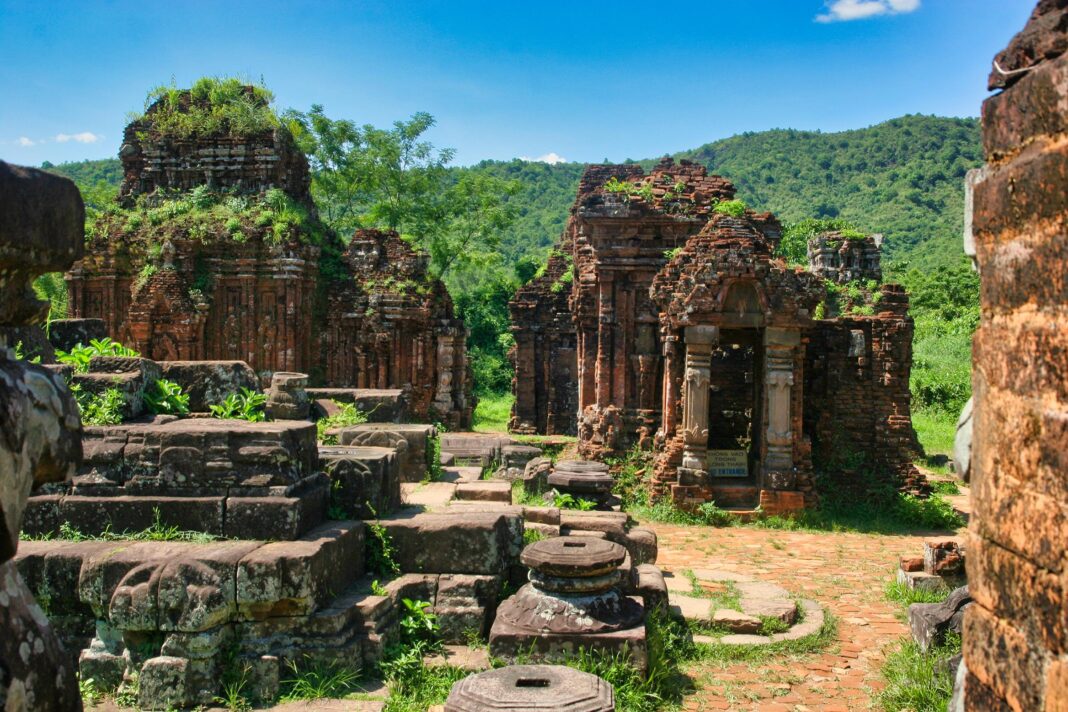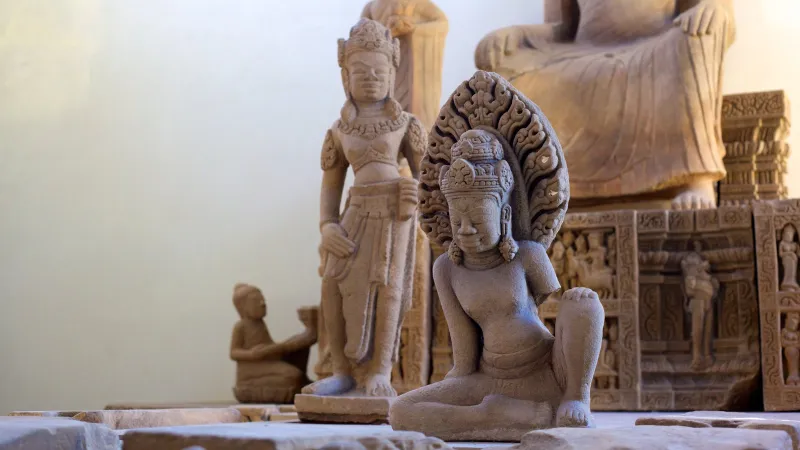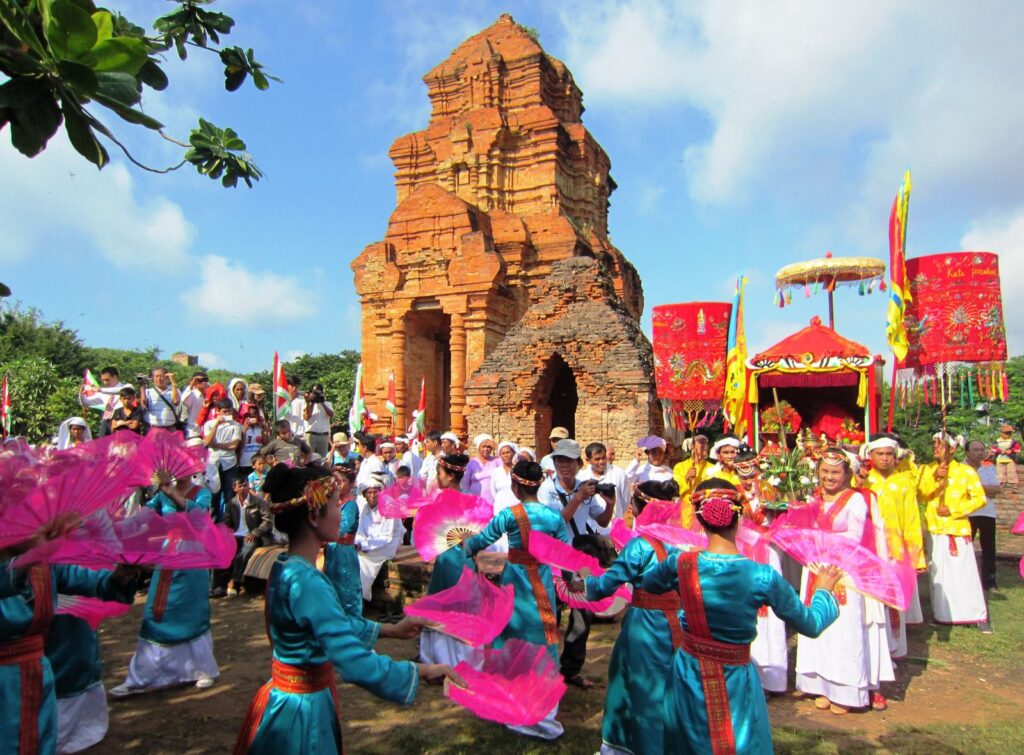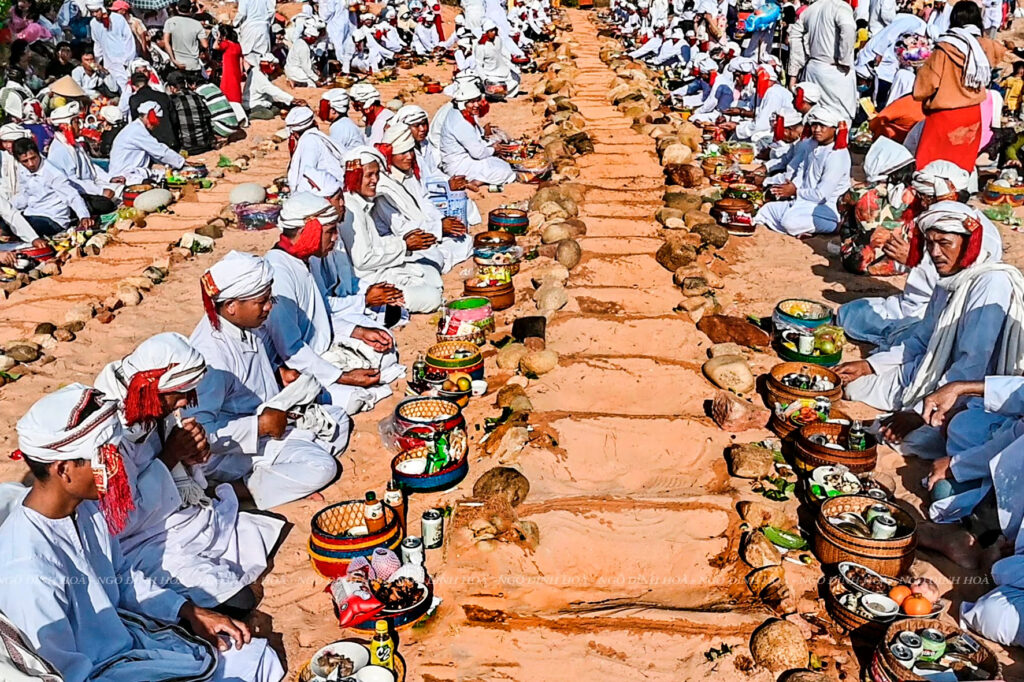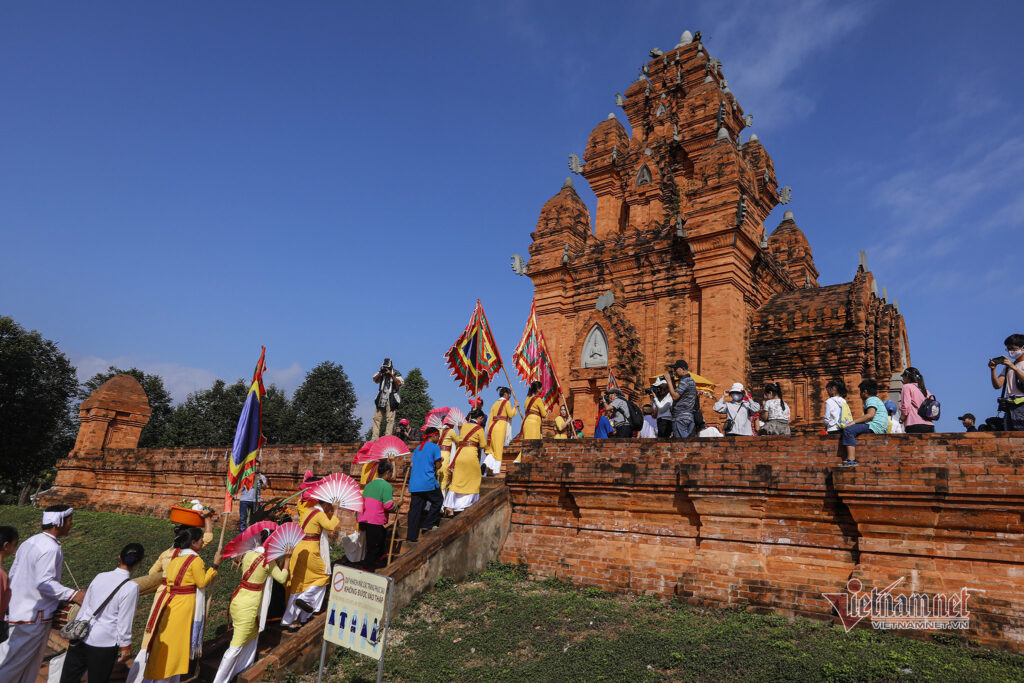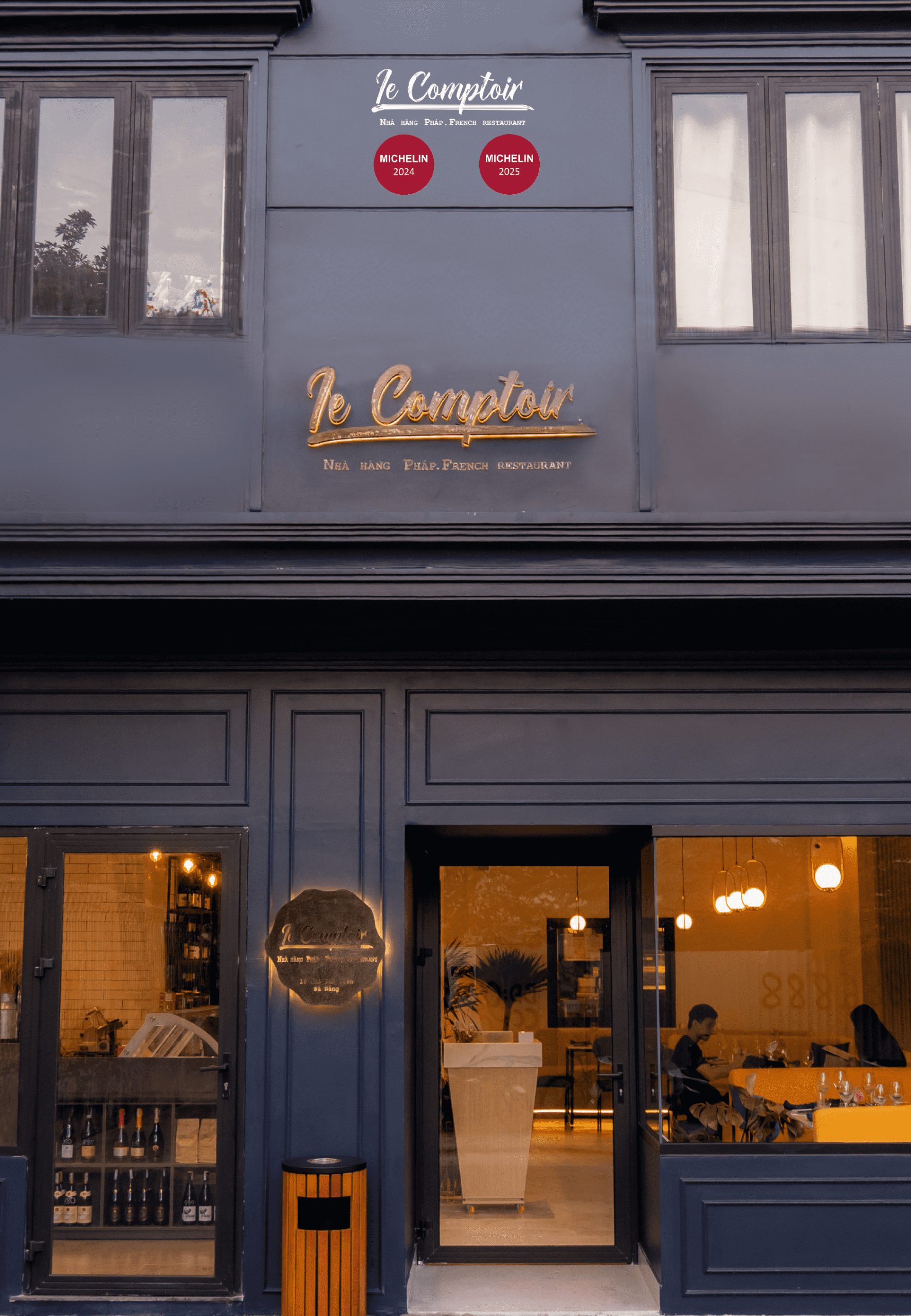The Chams had a golden age of prosperity, but they are not as well-known today as they previously were. We went over the history, some of the significant occurrences, and several recommended locations to see the ruins of the Cham Kingdom in Part 1. To learn more about that forgotten kingdom, we will be perusing articles today that go into further detail on the religion and way of life of the Cham people.
The Chams and their development of religion
The Cham people’s beliefs and religions can be divided into four groups: Cham Jat, who have not been influenced by any other religion; Cham Brahmanism, or Cham Hinduism, that are influenced by Hinduism; Cham Bani, which is influenced by Islamism; and Cham Muslims, who are influenced by Sunni Islam.
In addition to maintaining their long-standing indigenous beliefs, the Cham people are also influenced and adopted by external thoughts, such as Islam from the Middle East and Hinduism from India. All of these variables led existence to the many ethnic nuances.
In terms of Champa history, there are three primary eras to be talked about: the establishment of the nation (between the 2 and 4 centuries), the period of Indianization (between the 4 and 15 centuries), and afterward indigenization (after the 15 centuries). In this article, we only talk about Indians’ affection for Cham Hinduism and Cham Bani, which are the two main factors influencing the Cham people and their culture.
1. Cham Hinduism
“Cham Hindu is not purely Hinduism, it was mixed with local beliefs”.
We have to understand the differences between Hinduism and Brahmanism to comprehend Cham Hinduism.
– The ancient Indian polytheistic religion known as Brahmanism was founded on the Vedas. Three gods are worshipped in Brahmanism: Brahma, Vishnu, and Shiva.
– Hinduism developed later and was founded on the Upanishads’ philosophy of life. The two main groups of Hinduism are those who worship Shiva and those who admire Vishnu.
Shiva was considered the most significant god of the Cham people and was frequently worshipped as a statue, based on numerous structures and inscriptions found there. In addition, it was found that the Cham people worship Sakti, the original name for Shiva’s wife, or Bhagavati. Po Ina Nagar Tower, located in Nha Trang, Khanh Hoa, is the main center of worship.
However, the three-part linga, which stands for the three gods of Cham Hinduism, is more frequently seen. Shiva is represented by the first portion of the linga, Vishnu by the second, and Brahma by the final part with 4 sides.
In addition to Shiva’s wife, they also worship other deities who are close to him, like Ganesa (the son of Shiva with an elephant head and a human body), Skanda (the god of war), and Nandi (Shiva’s riding cow). It was common to find these statues worshipped next to Shiva.
It should be mentioned, nevertheless, that the royalty and members of the royal family were truly committed to the devotion of Hinduism, including a knowledge of texts, customs, and temple and shrine worship. In the meantime, the majority of people continued to practice their native religions and worshiped natural deities such as the earth, heaven, and…
Thus, in this period, the Cham’s religions were divided into two distinct parts: the religion of the royal family, aristocracy originated from India; and Indigenous beliefs influenced by some Hinduism elements of the commoners.
2. The reception of Cham Bani (affected by Islam)
A Muslim community known as the Chams was established in the sixteenth century when Islam started to establish itself in these kingdoms as a result of its connections with the nations of Southeast Asia. These days, we also know that’s Cham Bani. Having received Islam’s affection, they adapted it and made it their religion.
The Cham people worship both nature gods and human gods, including heroes, queens, kings, and ancestors. They also undertake rituals for grandparents, ancestors, and the deceased on numerous community occasions, such as visiting ancestors’ graves and honoring ancestors, because they think that the deceased still exists in another life.
Compared to the native people, the Chams impacted by Islam worship Islamic deities like Muhammad, Ali, and others and view Allah as their supreme god. While Cham people see Allah as the principal god in various belief systems, Islamism regards Allah as their unique god.
The Chams acknowledged the Qur’an as well, but they mostly saw it as a sacred document to be read at community or life-cycle ceremonies rather than as a genuine theological work that instructs and guides believers.
In addition, the church was constructed by the Chams, although they did not visit it for prayer. The church is only open during certain times of the year, mostly during the Ramadan festivals.
In conclusion, the Chams were not fully committed to Indian Hinduism; rather, these religions were mostly connected with royalty and nobility. The Chams stopped using the scriptures, worshiping the gods, and following Hinduism’s theology around the fifteenth century. Islam was concurrently introduced into Cham society, but it also necessarily adopted elements of the native culture and lost its orthodoxy as a monotheistic religion.
The Champa kingdom also accepted Islam’s and Hinduism’s cultural and religious legacy during every phase of its development and transformation. The preceding values have had a considerable impact on the architectural structures and traditions that have been kept to this day, even though these values and influences did not later have an important effect on the lives of the Cham people. However, many people have incorrect ideas about Cham Hinduism and Cham Balamon because there is a lack of documentation and research materials. I hope that readers gain a thorough and basic understanding of the religions and beliefs of the Cham people by reading this article.
Some highlight festivals of the Chams
1. Ramadan Festival
Celebrated by the Cham Muslim community in An Giang, Ramadan happens within September 1–September 30, which in the solar calendar means the end of August to the beginning of September. Families and friends met to bless each other and pray to their ancestors for blessings and good business. Cham people visit graves on this occasion and invite their ancestors to celebrate. The Cham people can also use this as a moment to reflect on their actions, both good and bad, overcome, make apologies, and repent. The Cham people fast (abandon eating, drinking, smoking, etc.) for this month, eating just before sunrise and after sunset.
2. Roya Haji festival
The traditional Tet festivities of the Cham Muslims is called Roya Haji Tet, or the Tet of love and forgiveness (from December 10-13 according to the Muslim calendar). In addition to slaughtering cows and goats to share with the entire village to celebrate Tet, the Cham people bring a new age to this distinctive and fascinating traditional tradition. During these holidays, a great number of them gather at the cathedral to worship.
To learn more about the Champa kingdom and the remaining cultural and historical values, you can visit the following locations:
1. Cham Museum – 01 2/9 Street, Hai Chau District, Da Nang City, Vietnam
2. My Son Sanctuary, Duy Xuyen, Quang Nam.
3. Ponagar Tower – 2/4 Street, Nha Trang, Khanh Hoa.
4. Banh It Tower – Phuoc Hiep, Tuy Phuoc, Binh Dinh.





